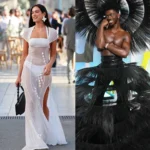Fashion and the Circular Economy: A Look at Upcycling, Recycling, and Zero-Waste Fashion
Learn about the latest trends in sustainable fashion and the circular economy. Explore upcycling, recycling, and zero-waste fashion.
Sustainable fashion is becoming an increasingly important topic within the fashion industry. With the negative impact that the industry has on the environment, more and more brands are taking steps to adopt sustainable practices and reduce their environmental footprint. One of the ways in which the industry is addressing sustainability is through the concept of the circular economy. In this article, we will look at three specific areas of the circular economy that are becoming increasingly popular in the fashion industry: upcycling, recycling, and zero-waste fashion.

Upcycling is the process of taking discarded or unused materials and transforming them into new products. This can include turning old t-shirts into tote bags or using scraps of fabric to create patchwork designs. Upcycling not only reduces waste but also creates unique and individualized products that have a lower environmental impact than new, mass-produced items. By repurposing existing materials, designers can reduce the amount of raw materials they use and reduce their carbon footprint.
Recycling involves breaking down existing materials and turning them into new products. In the context of fashion, this can include turning plastic bottles into polyester fibers or using old clothing to create new fabrics. Recycling reduces the amount of waste that goes to landfills and reduces the need for virgin materials. In recent years, recycled materials have become increasingly popular within the fashion industry. Brands such as Patagonia have been using recycled materials for years, and others, such as Adidas, have recently launched products made from recycled ocean plastics.
Zero-waste fashion is a design philosophy that aims to eliminate waste in the production process. This can involve designing patterns that use every inch of fabric or creating products that are fully biodegradable. Zero-waste fashion not only reduces waste but also encourages designers to be more creative in their approach to fashion design. It requires a different way of thinking about the design process, with a focus on minimizing waste at every stage of production. Brands such as Eileen Fisher and Zero Waste Daniel have been at the forefront of this movement.
The fashion industry is a major contributor to the global economy, with an estimated global market value of $2.5 trillion. Many fashion brands are now embracing the circular economy as a way to reduce their environmental impact. Levi’s has introduced a “WaterLess” production process that reduces the amount of water used in the manufacturing process. Patagonia has implemented a “Worn Wear” program that encourages customers to repair and reuse their clothing. These initiatives are helping to promote more responsible consumption and reduce the amount of clothing that ends up in landfills.
The circular economy also presents opportunities for new business models. For example, some companies are now offering clothing rental services, allowing customers to rent clothes rather than buying them. This not only reduces the amount of clothing that ends up in landfills but also provides a more sustainable and affordable option for consumers. The circular economy is an economic system in which resources are used and reused in a closed loop, rather than being discarded as waste. In the context of the fashion industry, this means designing clothing and accessories that can be reused, repurposed, or recycled at the end of their life cycle. This approach to fashion has led to the development of new concepts such as upcycling, recycling, and zero-waste fashion.
However, there are also challenges associated with the circular economy in the fashion industry. One of the biggest challenges is the lack of standardized recycling and upcycling processes. This can make it difficult to ensure that materials are properly reused or recycled. There are also challenges associated with the cost of sustainable materials and production processes. While sustainable materials and production processes can be more expensive than traditional methods, this is changing as the industry evolves and demand for sustainable fashion grows.
Despite the challenges, the circular economy presents an opportunity for the fashion industry to reduce its environmental impact and create more sustainable business models. By embracing concepts such as upcycling, recycling, and zero-waste fashion, fashion brands can reduce waste, conserve resources, and promote more responsible consumption. There are many examples of brands that are already doing this and leading the way. With continued innovation and collaboration, the fashion industry can continue to address the challenges and opportunities associated with the circular economy and create a more sustainable future.
Image Source : Thread Stories







